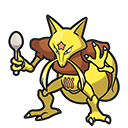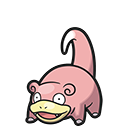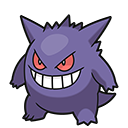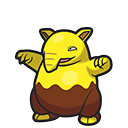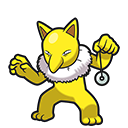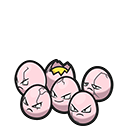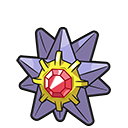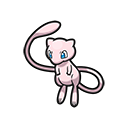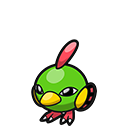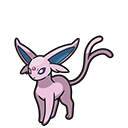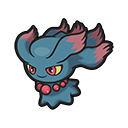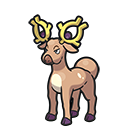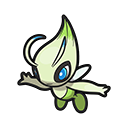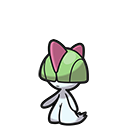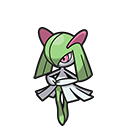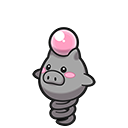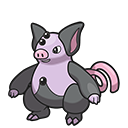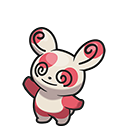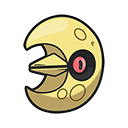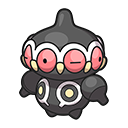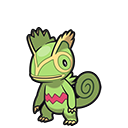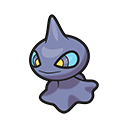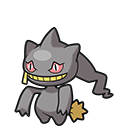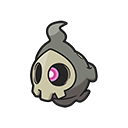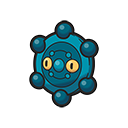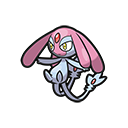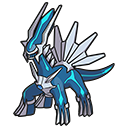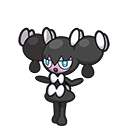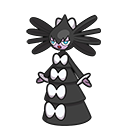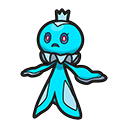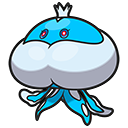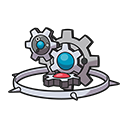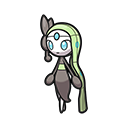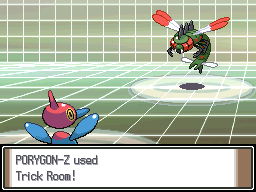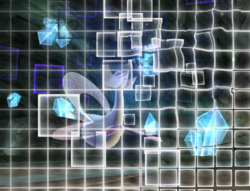Trick Room (move)
| Trick Room トリックルーム Trick Room | ||||||||||||||
| ||||||||||||||
Range
| ||||||||||||||
Availability
| ||||||||||||||
| ||||||||||||||
| ||||||||||||||
| ||||||||||||||
Trick Room (Japanese: トリックルーム Trick Room) is a non-damaging Psychic-type move introduced in Generation IV. It has been TM92 since Generation IV. It is Porygon-Z's signature level-up move; however, many others can learn the move via TM92.
Effect
Trick Room reverses the move order within each priority bracket so that Pokémon with a lower Speed stat attack first, whilst those with higher Speed stat will attack last. Individual brackets are still maintained; moves in higher priority brackets still work before moves in lower ones regardless of Trick Room. This effect lasts for five turns. Similar to Magic Room and Wonder Room, using Trick Room while it is already in effect will end it immediately.
Effects that alter the order of specific priority brackets override Trick Room. Therefore, Pokémon holding Full Incense or Lagging Tail and Pokémon with Stall will go last in their priority bracket regardless of their Speed stat. Pokémon activating Quick Claw will go first in their priority bracket.
Trick Room is in the -7 priority bracket and therefore will always go last, except against slower foes also using an attack in the same bracket.
In Generation V, there is a bug that causes any Pokémon with 1809 or more Speed to be unaffected by Trick Room.
Pokémon Mystery Dungeon
The user will either randomly reduce or increase the speed of all Pokémon on the floor.
Description
|
Learnset
By leveling up
| # | Pokémon | Type | Level | |||||||
|---|---|---|---|---|---|---|---|---|---|---|
| IV | V | VI | ||||||||
| 474 | 
|
Porygon-Z | Normal | -- | -- | ' | ||||
| Bold indicates a Pokémon gains STAB from this move. Italics indicates a Pokémon whose evolution or alternate form receives STAB from this move. A dash (−) indicates a Pokémon cannot learn the move by the designated method. An empty cell indicates a Pokémon that is unavailable in that game/generation. | ||||||||||
By TM
Special move
Generation IV
| ||||||||||||||||||
In the anime
| The user's eyes glow red and it creates a transparent screen over the battlefield. Slow Pokémon can move first. | |||
| Pokémon | Method | ||
|---|---|---|---|
| User | First Used In | Notes | |

|
Dusknoir's eye glows red and a large light blue rectangle with light blue transparent walls and ceiling appear around the battlefield. Then, the light blue glow fades, and the walls and ceiling becomes invisible. During battle, while the attack is in effect, the slower Pokémon on the field moves extremely fast. Every time the opponent sends out a new Pokémon, the light blue transparent walls and ceiling appear again to show that it is still in effect. | ||
| Conway's Dusknoir | Working on a Right Move! | Debut | |
In the manga
In the Pokémon Adventures manga
| The user creates a room where the slow move faster. | |||
| Pokémon | Method | ||
|---|---|---|---|
| User | First Chapter Used In | Notes | |

|
Mismagius chants a spell and can cause the opponent to see whatever illusions it wants. If the opponent doesn't like the illusion, then it will develop a headache. If the opponent accepts the illusion, they can get past it easily. Also, during battle, the slowest Pokémon on the field attacks first. Mismagius can also use the attack while inside its Poké Ball. | ||
| Fantina's Mismagius | Mirages of Mismagius I | Debut | |
In other generations
Trivia
- Trick Room has a special animation effect in Pokémon Battle Revolution. During this effect, a sphere of blinking and fading purple squares surround the battle area. Will's room in HeartGold and SoulSilver also has a similar animation.
- In HeartGold, SoulSilver, and Platinum, a roulette choice in the Battle Arcade may result in giving a battle the Trick Room effect.
- Trick Room has the lowest priority of all moves, along with Magic Room and Wonder Room.
In other languages
| ||||||||||||||||||||||||||||||||||||
| Variations of the move Trick Room | ||
|---|---|---|
| ||
| Generation IV TMs | |
|---|---|
| 01 • 02 • 03 • 04 • 05 • 06 • 07 • 08 • 09 • 10 • 11 • 12 • 13 • 14 • 15 • 16 • 17 • 18 • 19 • 20 • 21 • 22 • 23 24 • 25 • 26 • 27 • 28 • 29 • 30 • 31 • 32 • 33 • 34 • 35 • 36 • 37 • 38 • 39 • 40 • 41 • 42 • 43 • 44 • 45 • 46 47 • 48 • 49 • 50 • 51 • 52 • 53 • 54 • 55 • 56 • 57 • 58 • 59 • 60 • 61 • 62 • 63 • 64 • 65 • 66 • 67 • 68 • 69 70 • 71 • 72 • 73 • 74 • 75 • 76 • 77 • 78 • 79 • 80 • 81 • 82 • 83 • 84 • 85 • 86 • 87 • 88 • 89 • 90 • 91 • 92 | |
| Generation IV HMs | |
| 01 • 02 • 03 • 04 • 05 (DPPt • HGSS) • 06 • 07 • 08 | |
| Generation V TMs | |
|---|---|
| 01 • 02 • 03 • 04 • 05 • 06 • 07 • 08 • 09 • 10 • 11 • 12 • 13 • 14 • 15 • 16 • 17 • 18 • 19 20 • 21 • 22 • 23 • 24 • 25 • 26 • 27 • 28 • 29 • 30 • 31 • 32 • 33 • 34 • 35 • 36 • 37 • 38 39 • 40 • 41 • 42 • 43 • 44 • 45 • 46 • 47 • 48 • 49 • 50 • 51 • 52 • 53 • 54 • 55 • 56 • 57 58 • 59 • 60 • 61 • 62 • 63 • 64 • 65 • 66 • 67 • 68 • 69 • 70 • 71 • 72 • 73 • 74 • 75 • 76 77 • 78 • 79 • 80 • 81 • 82 • 83 • 84 • 85 • 86 • 87 • 88 • 89 • 90 • 91 • 92 • 93 • 94 • 95 | |
| Generation V HMs | |
| 01 • 02 • 03 • 04 • 05 • 06 | |

|
This article is part of Project Moves and Abilities, a Bulbapedia project that aims to write comprehensive articles on two related aspects of the Pokémon games. |

